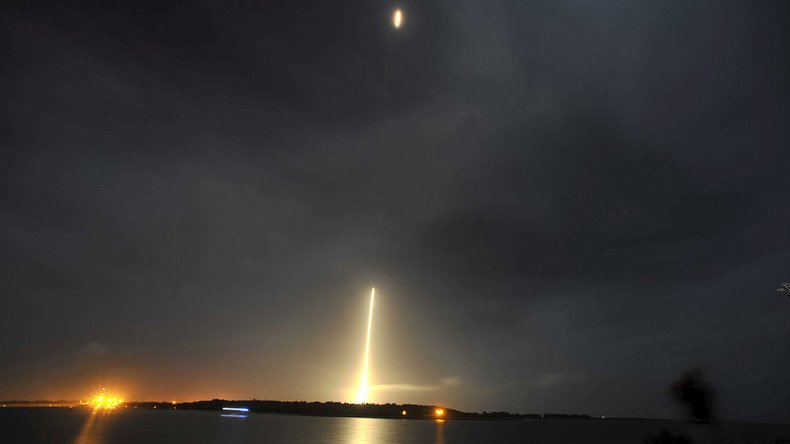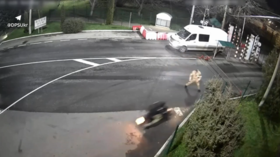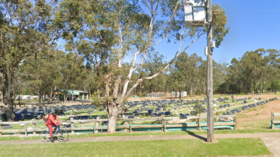NASA live streams rocket launch

NASA’s Orbital ATK Cygnus capsule is set to take off from Cape Canaveral, Florida on Tuesday. The rocket is filled with nearly 7,500 lbs of science and research, crew supplies and vehicle hardware that will be received by the International Space Station.
The Cygnus is launching its fifth mission at approximately 11:05 PM EST. The Cygnus is expected to be received by the International Space Station (ISS) on Saturday, March 26th, according to a press release from NASA.
Among the numerous experiments that NASA plans on conducting with the supplies transported by the Cygnus, an interesting one pertains to "regolith" found on other planets and comets. Regolith, better known as "soil" can be taken from asteroids, comets, the moon, and other airless worlds.
Launch coverage for @OrbitalATK#Cygnus launch has started. Follow along at https://t.co/rdgOY1cW3hpic.twitter.com/M72F1q9qyK
— NASA Kennedy / KSC (@NASAKennedy) March 23, 2016
23 March 2016
03:34 GMTSpacecraft separation! #Cygnus is now flying free with 3.5 tons of cargo to @Space_Station. https://t.co/sQlK015l9Uhttps://t.co/Vn7AC5oqPB
— NASA (@NASA) March 23, 2016- 03:16 GMT
Everything looks good!
Centaur continuing nominal
— Tory Bruno (@torybruno) March 23, 2016 - 03:13 GMT
The Cygnus is approaching speeds of 10,000 miles per hour (16093.4 kmh)
Watching these launches from the front yard never get old. Nice launch @OrbitalATK@ulalaunchpic.twitter.com/NmIqWF0nhA
— Brendan Byrne (@SpaceBrendan) March 23, 2016 - 03:11 GMT
Everything looking good so far for #Cygnus launch. Beautiful take-off! pic.twitter.com/kEsn4NulPV
— Emily Calandrelli (@TheSpaceGal) March 23, 2016 - 03:11 GMT
The booster has began to throttle.
And liftoff of @OrbitalATK’s #Cygnus cargo mission to the @Space_Station! Watch: https://t.co/KX5g7zfYQehttps://t.co/RS1zb84wvQ
— NASA (@NASA) March 23, 2016 - 03:04 GMT
All systems green
— Tory Bruno (@torybruno) March 23, 2016T-2:45: The Flight Termination System is switching to internal power, using batteries separate from those of Atlas V https://t.co/qWkC6gjjPG
— ISS Updates (@ISS101) March 23, 2016 - 03:03 GMT
Here we go!! https://t.co/eyrgQlgX0q
— Orbital ATK (@OrbitalATK) March 23, 2016 - 03:02 GMT
Cygnus is ready to launch.
We have permission to launch. Ready to resume countdown! #Cygnus#OA6#AtlasV@ulalaunch@OrbitalATK
— AmericaSpace (@AmericaSpace) March 23, 2016 - 02:52 GMT
T-minus 15 minutes! #GoCygnus#GoAtlas
— Orbital ATK (@OrbitalATK) March 23, 2016 - 02:45 GMT
Among the various experiments and supplies abroad the Cygnus, one interesting passenger is the Spacecraft Fire Experiment-I (Saffire-I); an experiment to learn more about the behavior of a large-scale fire in space.
Instruments on the returning Cygnus will measure flame growth, oxygen use and more.
NASA to set spacecraft on fire, for scientific purposeshttps://t.co/z7PXo5fXaLpic.twitter.com/xzhm0iZmEJ
— RT America (@RT_America) March 16, 2016.@OrbitalATK’s #Cygnus spacecraft launches at 11:05pm ET to @Space_Station. What's onboard: https://t.co/Z4bkSyjRdcpic.twitter.com/AmtuNlWtq0
— NASA (@NASA) March 23, 2016












